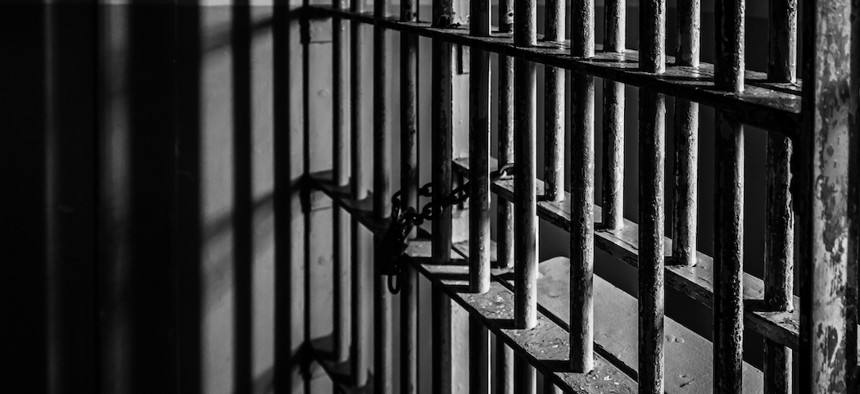You can contract COVID-19 from having a lapse in employment, drinking alcohol or missing curfew. Surprisingly, this is the case for the 36,000 New Yorkers on parole who may be locked up during the pandemic for such minor mishaps.Surveillance as usual is literally killing us.
Look no further than New York City’s Rikers Island jails: as reported in the New York Times, Raymond Rivera, 55, of Queens left a drug treatment program before he completed itt and Michael Tyson, 53 missed appointments with his parole officer. They both died of COVID-19 on Rikers within a day of one another in the first week of April. Both were waiting for the final resolution of their cases, accused not of new crimes, but of technical rule violations of state parole, Tyson since late February, Rivera since August. Rivera’s wife rightly asked the Times “Why did he have to wait so long?”
New York state parole effectively gave them death sentences, even though the courts did not. Adding to the public health crisis are the COVID-19 infections that arise when more than 1,500 Rikers staff who have become infected go home to their families after work.
For at least the duration of the COVID-19 outbreak in New York, the state should save lives by not jailing people for non-criminal acts. On April 21, the Pew Charitable Trusts and Arnold Ventures proffered over 50 straightforward recommendations to safely reform supervision by reducing both the number of people under community supervision and the number who get imprisoned for rule violations. Key proposals include:reducing technical violations and instead incentivizing good behavior by granting “merit time” off of supervision for compliance with supervision conditions.
Gov. Andrew Cuomo himself has the power to protect public health by safely releasing people held in state prisons and county jails for technical violations and telling his parole officers to stop sending people back to prison for those minor violations. And the Legislature has the ability to ensconce reasonable parole policies into law by enacting the Less Is More Act that would eliminate certain technical violations like missing curfew or consuming alcohol and incentivize good behavior on parole by shortening supervision periods by 30 days for every 30 days successfully completed.
Over a month ago, Cuomo announced that he would release some people in jails awaiting violation hearings for what he described as having “violated parole for non-serious reasons.” Though it was a good move, it raises the question of why they were incarcerated, even before the pandemic, if the parole violation wasn’t serious. But by the time Rivera and Tyson died, fewer than half of the 400 people the governor said he’d release from Rikers had actually been freed. And, since the governor’s release commitment, over 100 new people have been detained at Rikers for technical violations. They are now at risk, just like Rivera and Tyson were.
Across New York and the nation, there is a growing consensus that parole is a feeder into prisons and needs to be reformed to be less punitive and more rehabilitative. The Pew recommendations to do so were endorsed by dozens of organizations including the conservative R Street Institute and American Conservative Union. Even before the pandemic, a group of over 80 probation and parole commissioners calledExecutives Transforming Probation and Parole issued a statement that community supervision “has become overly burdensome, punitive and a driver of mass incarceration, especially for people of color” and calling for “probation and paroleto be substantially downsized, less punitive, and more...restorative.” Seven district attorneys, including Albany’s David Soares, have endorsed the Less Is More Act.
While much is rightly written about the United States having the world’s highest rate of incarceration, fewer realize that there are twice as many people in the U.S. on probation and parole as are incarcerated. A quarter of those in U.S. prisons are incarcerated for technical violations at an annual national cost of $2.8 billion. New York’s record is a poor one when it comes to parole; our rate of parole ending with prison reentry is 47 percent, substantially higher than the 28 percent national average. New York parole officials return six times as many people to prison for non-criminal, technical violations as the number who go back for new convictions. Before the pandemic, persons accused of minor mishaps, like Tyson and Rivera, were the only population group actually increasing on Rikers Island. Black and Latino people are incarcerated on Rikers for technicals at 12 and four times the rate, respectively, of white people.
In New York, the Columbia University Justice Lab, the New York State Bar Association, the Independent Commission on New York City Criminal Justice and Incarceration Reform, and even the New York City Mayor’s Office of Criminal Justice have decried excessively locking people up for technical parole violations. Outside of the City, groups like the New York State Association of Counties and the Rochester City Council have endorsed the Less Is More Act.
Before the crisis, Cuomo stated, “New York jails and prisons should not be filled with people who may have violated the conditions of their parole, but present no danger to our communities.” There’s clearly a gap between his beliefs and actions, leading to haphazard and inadequate handling of parole violations – putting New Yorkers’ lives at risk.
COVID-19 caught us all by surprise and Gov. Cuomo is viewed as having adeptly responded. But the governor had plenty of time to reduce incarceration for technical parole violations before – and since – the pandemic. Now it’s time for Cuomo to act, before there are more unnecessary deaths like Raymond Rivera’s and Michael Tyson’s.
NEXT STORY: Cuomo’s doing better than Newsom. Here’s why.


